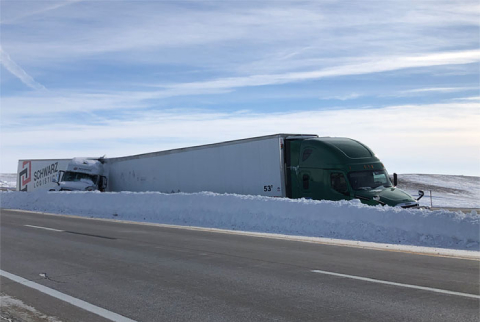By Dar Danielson (Radio Iowa)
The director of the Iowa Department of Transportation says it took millions of dollars to clear the roadways from the double dip of blizzards in early January.
Director Scott Marler says the storms also generated millions of clicks on the 511ia.org road conditions site. “We had over 32 million hits on 511 during those back-to-back winter storms. We also had nearly 12 million impressions on our social media,” he says. The storms the second week of January dumped more than 24 inches of snow in some areas to go along with double-digit negative temperatures, and wind gusts of 45 to 50 miles an hour that created whiteout conditions.
Marler reported on the DOT’s costs for the storms today for the state Transportation Commission. “We spent nearly 104,000 in labor, $4.1. Our equipment hours were more than 63,000 hours and that was 2.3 million (dollars) in costs,” Marler says.”We spread nearly 30,000 tons of rock salt, nearly 6 million gallons of brine. That was 4 million dollars in our materials cost. So all in it was about a $10.4 million effort by the department fighting those back-to-back winter storms.”
Marler says there’s one surprising stat after reviewing the storms. “There were zero fatalities from those back-to-back winter storms, which was a miracle in and of itself,” he says. Marler says he traveled the interstate days after the storm and was surprised at the aftermath. “Many portions of the median were just like a litter ground of jackknifed semis and vehicles that had gone in the ditch. I shudder to think some of the conditions that these customers as well as the people working out on the road must have been under,” he says. “But zero fatalities is a wonderful story to tell after winter storms, like we experienced.”
Marler says many motorists did heed the warnings and stayed off the roadways during the storms. He says the amount of trucks caused problems because once things got slick and they couldn’t move, all traffic backed up and plows couldn’t get in to treat the roadways.




